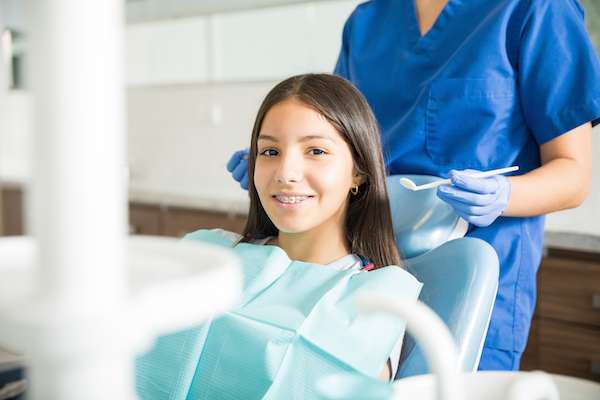 According to the American Dental Association, little more than half of Americans visit a family dentist twice yearly, which is the frequency with which the ADA recommends checkups. This means that an overwhelming percentage — more than 40% — only schedule a visit when something is wrong. Individuals who fall into the latter category may actually end up spending more money on dental care than if they were to maintain biannual appointments visits. Moreover, failing to see a family dentist regularly can lead to significant dental issues and, eventually, tooth loss.
According to the American Dental Association, little more than half of Americans visit a family dentist twice yearly, which is the frequency with which the ADA recommends checkups. This means that an overwhelming percentage — more than 40% — only schedule a visit when something is wrong. Individuals who fall into the latter category may actually end up spending more money on dental care than if they were to maintain biannual appointments visits. Moreover, failing to see a family dentist regularly can lead to significant dental issues and, eventually, tooth loss.
The importance of regular checkups with a family dentist
Though the recommended frequency of visits with a family dentist will vary from person to person, the ADA suggests that everyone should make at least one to two visits a year. A good rule of thumb individuals should live by, however, is to schedule a cleaning every six months.
Many people wonder why it is necessary to schedule dental appointments twice a year, or at all, if the teeth are in otherwise good shape. The answer to this is two-fold.
For one, regular dental visits give patients an opportunity to undergo much more thorough cleanings than what can be achieved at home. While brushing, flossing, and rinsing twice daily can help prevent the buildup of bacteria on the teeth and gums, these practices cannot clean well between the teeth or beneath the gumline. With professional tools, however, a dental hygienist or dentist can remove the buildup of plaque or tartar in hard to reach places and therefore reduce a patient’s risk of developing cavities, gum disease, bad breath, or other dental problems.
Two, a thorough dental exam can reveal small issues before they become bigger and costlier ones. If caught early on, minor issues, such as dental caries, can be reversed or treated before causing major problems.
Other times to visit a family dentist
Some individuals may require more frequent visits to a family dentist than others or need to schedule a visit that falls outside of the typical six-month schedule. Instances that may require a visit sooner rather than later include the following:
- When a patient experiences severe, lingering tooth or gum pain.
- When a patient experiences sudden and/or extreme tooth or gum sensitivity.
- When a patient experiences trauma to the mouth, such as after a sports injury or car accident.
- When a tooth becomes cracked, chipped, loose, or broken.
- When a person develops a cavity.
- When an existing restoration or prosthetic becomes loose or falls out.
- When a person develops visible symptoms of decay or damage, such as white patches in the mouth or dark spots on the teeth.
In these instances, it is always best that a person seeks immediate attention from a dental professional, even if the issue turns out to be nothing major.
Conclusion
The job of a family dentist is to maintain patients’ overall oral health and prevent as many dental issues as possible. The best way these professionals can accomplish their jobs is by seeing each patient on an annual or biannual basis.
Request an appointment or call Cedar Lane Family Dentistry at 317-736-7476 for an appointment in our Franklin office.
Related Posts
No matter your stage in life, maintaining a healthy smile is important. Regular visits to a family dentist provide comprehensive care for people of all ages, ensuring a lifetime of healthy smiles. These routine check-ups address immediate concerns, can prevent future dental issues, and provide you and your family with the information you need to…
Maintaining optimal oral health requires consistent care and professional guidance. A family dentist plays a crucial role in ensuring the dental well-being of individuals of all ages. From preventive care to addressing specific concerns, regular visits to a family dentist provide comprehensive services that help maintain healthy teeth and gums while preventing potential oral health…
According to a survey by the American Dental Association, 85% of Americans understand that there is a strong correlation between oral health and total health, and a family dentist helps patients make this connection. Dental diseases and poor oral hygiene can lead to a number of other issues, so patients should prioritize preventive and early…
